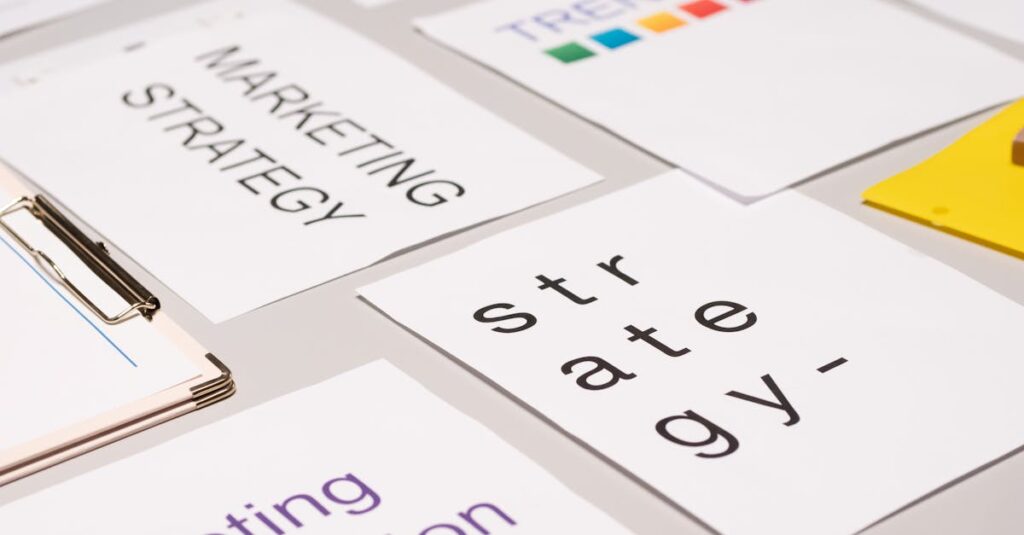How to Stay Ahead with Emerging Design Trends
Understanding the Importance of Design Trends in Today’s Market
The Role of Design Trends in Shaping Consumer Behavior
In an ever-evolving market, design trends play a crucial role in influencing consumer behavior. They help brands resonate with their audiences, guiding perceptions and enhancing the overall user experience. By staying abreast of current and upcoming trends, businesses can predict consumer preferences and tailor their offerings accordingly.
The Impact of Visual Design on Brand Identity and Recognition
Visual design is integral to establishing and maintaining a brand’s identity. A cohesive and contemporary visual style not only captures attention but also ensures that a brand remains memorable. As trends evolve, so too must the visual elements of a brand’s identity to maintain relevance and recognition in the market.
Identifying and Analyzing Current and Upcoming Design Trends
How to Spot Emerging Trends Before They Become Mainstream
Spotting emerging trends involves a combination of keen observation and proactive research. Monitor industry leaders, attend design conferences, and engage with trend reports to uncover nascent trends before they become widespread.
Key Resources and Tools for Trend Analysis in Visual Design
Utilizing resources like Behance, Dribbble, and various trend forecasting platforms can provide invaluable insights. These tools offer a plethora of inspiration and data to inform your design strategy.
The Intersection of Culture and Trends: How Social Movements Influence Design
Cultural shifts and social movements profoundly influence design trends. From sustainability to inclusivity, these societal changes shape the visual language and priorities of design. Understanding these intersections can help designers create work that is both relevant and impactful.
Innovative Techniques for Integrating New Trends into Your Work
Balancing Originality and Trendiness: Finding Your Unique Voice
While it’s essential to stay updated with trends, originality should not be compromised. Strive to find a balance where your unique voice is harmoniously blended with contemporary elements to create compelling and distinctive designs.
Experimenting with New Technologies: AR, VR, and 3D Design
Adopting cutting-edge technologies like Augmented Reality (AR), Virtual Reality (VR), and 3D design can elevate your work. Experimenting with these technologies can lead to innovative outcomes, setting your designs apart in a crowded market.
Collaborating with Other Creatives: Cross-Disciplinary Innovation
Collaboration across different disciplines fosters creativity and innovation. Engaging with professionals from varied fields can bring fresh perspectives and ideas, enhancing your design process and output.
Adapting to Change: Strategies for Staying Relevant in an Evolving Industry
Building a Flexible Design Process: Embracing Adaptability
In a rapidly changing industry, flexibility is key. Developing a design process that can adapt to new trends and technologies ensures longevity and relevance. Be ready to pivot and innovate as necessary.
Continuous Learning: The Importance of Workshops and Design Communities
Continuous learning through workshops and participation in design communities enhances skills and keeps you informed about the latest trends. Engaging actively in these spaces can lead to professional growth and sustained relevancy.
Measuring the Impact of Design Trends on Project Success
Analyzing User Feedback and Engagement with New Trends
User feedback is a pivotal metric in evaluating the success of trend integration. Monitoring engagement and collecting feedback can provide insights into how well your designs resonate with the audience.
Case Studies: Brands That Successfully Leveraged Emerging Design Trends
Studying successful case studies helps in understanding effective strategies. Brands that have adeptly utilized emerging trends can offer valuable lessons and inspiration. Examine what made their approach successful and consider how similar strategies can be adapted to your projects.
Future-Proofing Your Creative Practice
Forecasting the Next Wave of Design Innovations
Predicting future trends involves looking at technological advancements, societal shifts, and consumer behaviors. By staying informed, you can anticipate and prepare for the next wave of design innovations.
Building a Sustainable Practice: Ethical Considerations and Eco-Friendly Design Trends
Sustainability and ethical considerations are increasingly shaping design practices. Embracing eco-friendly trends not only benefits the environment but also aligns your practice with the growing consumer demand for responsible and sustainable design.
Cultivating a Mindset of Curiosity: Staying Ahead in a Fast-Paced Industry
Maintaining a curious mindset is essential for staying ahead in a fast-paced industry. Continuously seeking out new knowledge and experiences helps keep your creative practice dynamic and forward-thinking.

